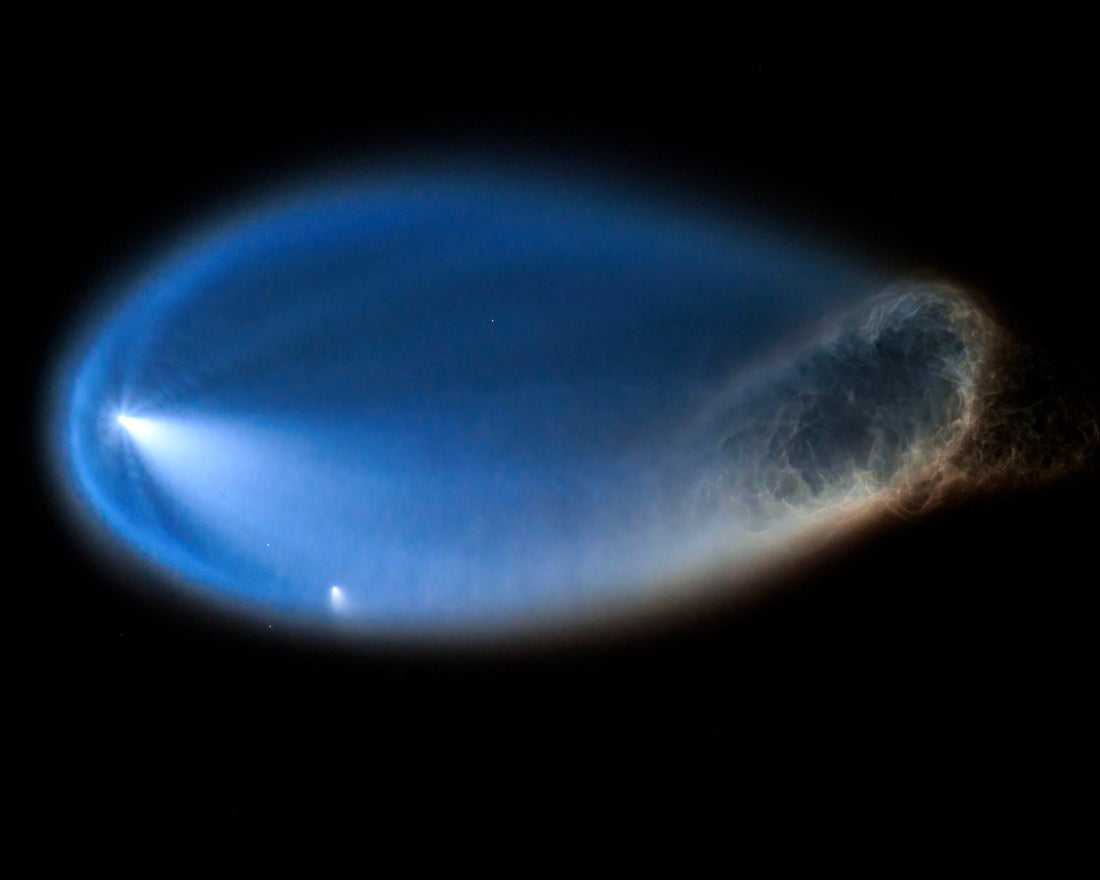
WTF Is A 'Space Jellyfish' And Why Did One Fly Over The Southern US This Week?
Share
An object streaked across the sky in the early morning hours of Thursday (May 5th Yankee time), as viewed by a camera in Waycross, Georgia.
Chris Combs, a professor of aerodynamics and mechanical engineering at the University of Texas at San Antonio, described it as looking like a space jellyfish: bright, fast, and with a glowing oblong aura.
As Combs pointed out, it was actually a SpaceX Falcon 9 rocket launching from Florida's Kennedy Space Center, roughly 400 kilometres south of the camera.
Every year, dozens of rockets launch from Kennedy Space Center, but few look like glowing invertebrates in the sky. Why?
Physicist Combs says it's a combination of perfect timing and physics.
Woah! Hell yes! That is a well placed ground shot of that same #SpaceX Starlink launch! 🤯
— Marcus House (@MarcusHouse) May 6, 2022
Thanks to @CaptainMoonlig7 for sharing!https://t.co/HfURuUONdU https://t.co/LfTRL5F4N0 pic.twitter.com/Qks4uUKew3
Firstly, the jellyfish's long, blobby "body" is simply the exhaust leaving the Falcon 9 rocket engine's nozzle, Combs wrote.
Because of the difference in pressure inside and outside the nozzle, the exhaust takes on such a bulbous shape.
This is an example of the exhaust leaving the engine's nozzle being "under expanded" - meaning the gas is at a higher pressure than the air around it when it leaves the nozzle.

According to Combs, after leaving the nozzle, the rocket exhaust drops its own pressure to match the background pressure in the atmosphere.
"In under-expanded exhaust, you get expansion fans at the nozzle exit to decrease pressure and match background: jellyfish, at high altitude," Combs tweeted.
That explains the blob. But what about the glow?
This is much simpler to square, Combs said – and it just comes down to timing.
Because the rocket launch occurred in the pre-dawn hours of Thursday morning (around 5:45 am East Coast Yankee time, light from the sun came from just over the horizon, illuminating up the exhaust plume, causing it to glow brightly against the dark sky.
Physics plus perfect timing equals space jellyfish. A simple equation for a high-altitude spectacle.
Of course, if you'd like to see a real space jellyfish, you'll need to look just a bit further into space – about 300 million light-years further to be exact.
That's how far away the galaxy cluster Abell 2877 is; when astronomers recently looked at the object with a radio telescope, they saw the ghostly outline of a jellyfish swimming through distant space.
That big jelly in the sky is also the result of a large gas explosion – in this case, a massive eruption from a gaggle of ancient black holes, Live Science previously reported.
#Space_Aus




